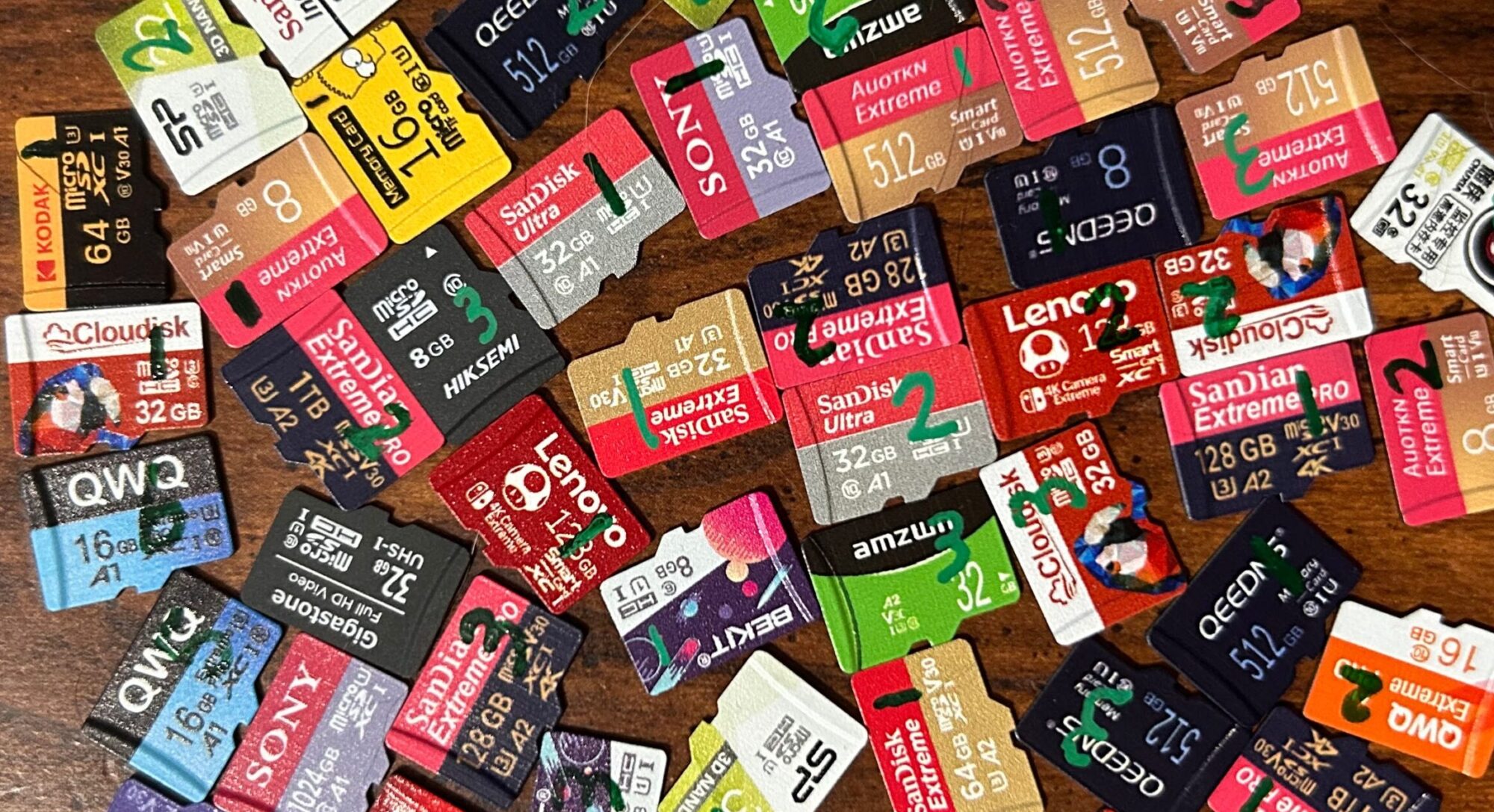This particular brand is one that I found thanks to an online survey I found, where someone was asking which microSD card had the highest endurance. One of Integral Memory’s cards was listed as one of the options. Neither Amazon nor AliExpress had them available for sale — but Amazon UK did, and for a price that was within my parameters.
This card met all the criteria that I set out for determining what’s considered a name-brand card — so I’ll lump these into the name-brand bucket.
Looking at the CID data, we can see that the manufacturer ID is set to 0x27 — which is assigned to Phison — so it’s likely that this card was produced for Integral by Phison. Phison’s cards have performed decently well for me in the past, so I went into this expecting good things out of this card.
All performance metrics were above average — with the exception of sequential write speeds, which were just a tad below average. Random I/O speeds were above average — in fact, this card did well enough on random I/O performance that it would have qualified for the A1 marking. Alas, Integral chose not to put this label on the card. Sequential write speeds were only just slightly above average — in fact, as far as sequential write speeds go, this card is the worst performing Phison card that I’ve tested so far (correction — the onn. 32GB has taken the honor of “worst-performing Phison card”.)
As far as endurance testing goes:
- Sample #1 was doing quite well for the first 4,331 read/write cycles; but during round 4,332, it experienced a…strange sort of data verification failure: the same 16 sectors’ worth of data was repeated over and over again — 526 times, to be exact. I’m not sure where the data came from either, as it failed CRC checks (meaning that it wasn’t the data my program wrote to the card). However, during round 4,333, it decided to stop responding to commands altogether.
- Sample #2 was chugging along just fine — with no errors whatsoever — until round 6,657, when it decided to simply stop responding to commands.
- Sample #3’s first error was a series of bit flips that affected 1,024 non-contiguous sectors during round 5,681. It chugged along for only another 35 read/write cycles before it stopped responding to commands altogether. Up to that point, less than 0.1% of the sectors on the card had been flagged as “bad”.
This card does make an endurance claim: on the back of the package, it says that it should last for 19 months under continuous recording. None of them lasted even a quarter of that time. But this endurance claim is likely based on recording data at a given bitrate. What is that bitrate? The package doesn’t say, but it does give us a clue: it says that the card will last about 4.8 hours before it fills up. That works out to a bitrate of about 14.4Mbps. Over the course of 19 months (assuming 30 days to a month), that would come out to about 88.6TBW — or 2,854 read/write cycles. So depending on how you look at it, these cards lasted somewhere between 1.5x-2.3x their rated endurance.
Overall? This card offered sequential I/O speeds that were just average, but random I/O speeds that were above average. This would make it more suited to a tablet or gaming console use case rather than, say, video recording — and the package seems to imply that it’s geared towards video recording. However, it has a couple of things working against it:
- While these cards did outlast their rated endurance, it was still below average. As of the time of this writing, the average time to the 0.1% failure threshold for all cards is sitting at about 7,700 read/write cycles — and these cards averaged 5,568 read/write cycles. And in particular, these cards gave little to no warning before failing.
- The price per gigabyte ended up being about $0.45 — which is pretty high compared to many of the other cards I tested.
So…is it a bad card? No, I wouldn’t say it is. But is it a great card? No, I wouldn’t say that either.
September 27, 2025
